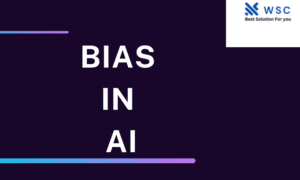In the ever-evolving landscape of artificial intelligence (AI), image classified has emerged as a pivotal field with profound implications across various industries. We, at [Your Company Name], are dedicated to exploring the cutting-edge developments in image classification AI. In this comprehensive article, we will delve deep into the intricacies of image classified, its significance, the latest breakthroughs, and how it is shaping the future of technology and beyond.
Understanding Image Classification
Image classification is a fundamental task within computer vision, a subfield of AI that focuses on teaching machines to interpret and understand visual data. At its core, image classified involves training an AI model to assign predefined labels or categories to images. This technology has diverse applications, ranging from autonomous vehicles and healthcare diagnostics to e-commerce and content moderation.
The Significance of Image Classification
The significance of image classification cannot be overstated. It has revolutionized the way we interact with technology, making it more intuitive and efficient. Here are some key areas where image classified plays a pivotal role:
1. Autonomous Vehicles
In the realm of autonomous vehicles, image classification is the linchpin of safety and functionality. Cameras installed in self-driving cars constantly capture images of the surrounding environment. Image classification algorithms can identify pedestrians, other vehicles, traffic signs, and obstacles in real-time, enabling the vehicle to make split-second decisions to ensure safe navigation.
2. Healthcare Diagnostics
In the healthcare sector, image classification AI is transforming the diagnosis and treatment of diseases. Radiologists employ AI models to analyze medical images, such as X-rays and MRIs, with remarkable accuracy. This accelerates the diagnostic process, allowing healthcare professionals to make informed decisions swiftly.
3. E-commerce
For online retailers, image classified enhances the shopping experience. When you search for a specific product, AI algorithms analyze images to display relevant items. This personalized approach not only boosts user satisfaction but also drives sales.
4. Content Moderation
Social media platforms and websites with user-generated content heavily rely on image classified to enforce content guidelines. This technology can automatically flag and remove inappropriate or harmful images, safeguarding online communities.
Recent Breakthroughs in Image Classification
The rapid advancements in image classification AI have been nothing short of astounding. Here are some notable breakthroughs that have reshaped the landscape:
1. Transfer Learning
Transfer learning has revolutionized image classification. It involves pretraining AI models on vast datasets and then fine-tuning them for specific tasks. This approach significantly reduces the amount of labeled data required for training, making AI models more accessible and efficient.
2. Convolutional Neural Networks (CNNs)
CNNs have emerged as the backbone of image classified. These deep learning architectures mimic the human visual system, effectively capturing features from images. CNNs have become increasingly sophisticated, achieving state-of-the-art results in image classification tasks.
3. Explainable AI
Explainable AI (XAI) is gaining prominence in image. XAI algorithms provide insights into why an AI model made a particular decision. This transparency is crucial, especially in applications like healthcare, where the rationale behind AI-driven diagnoses must be understood.
The Future of Image Classification
As technology continues to advance, the future of image classification holds immense promise. Here are some key trends and possibilities on the horizon:
1. Enhanced Accuracy
AI researchers are tirelessly working to enhance the accuracy of image classified models. This will lead to more reliable autonomous vehicles, precise medical diagnoses, and improved user experiences in various applications.
2. Ethical Considerations
With the widespread adoption of image, ethical considerations are paramount. Striking a balance between innovation and responsible AI usage will be crucial to prevent potential misuse.
3. Cross-Domain Applications
Image will transcend its current boundaries, finding applications in unexpected domains. From agriculture to wildlife conservation, AI-driven image analysis will play an increasingly pivotal role in diverse fields.
In conclusion, classification in artificial intelligence is a rapidly evolving field with profound implications for our society. From revolutionizing healthcare to enhancing our daily interactions with technology, its impact is undeniable. With recent breakthroughs and ongoing research, we are poised to witness remarkable advancements in the years to come.
Check our tools website Word count
Check our tools website check More tutorial





So well-coordinated!